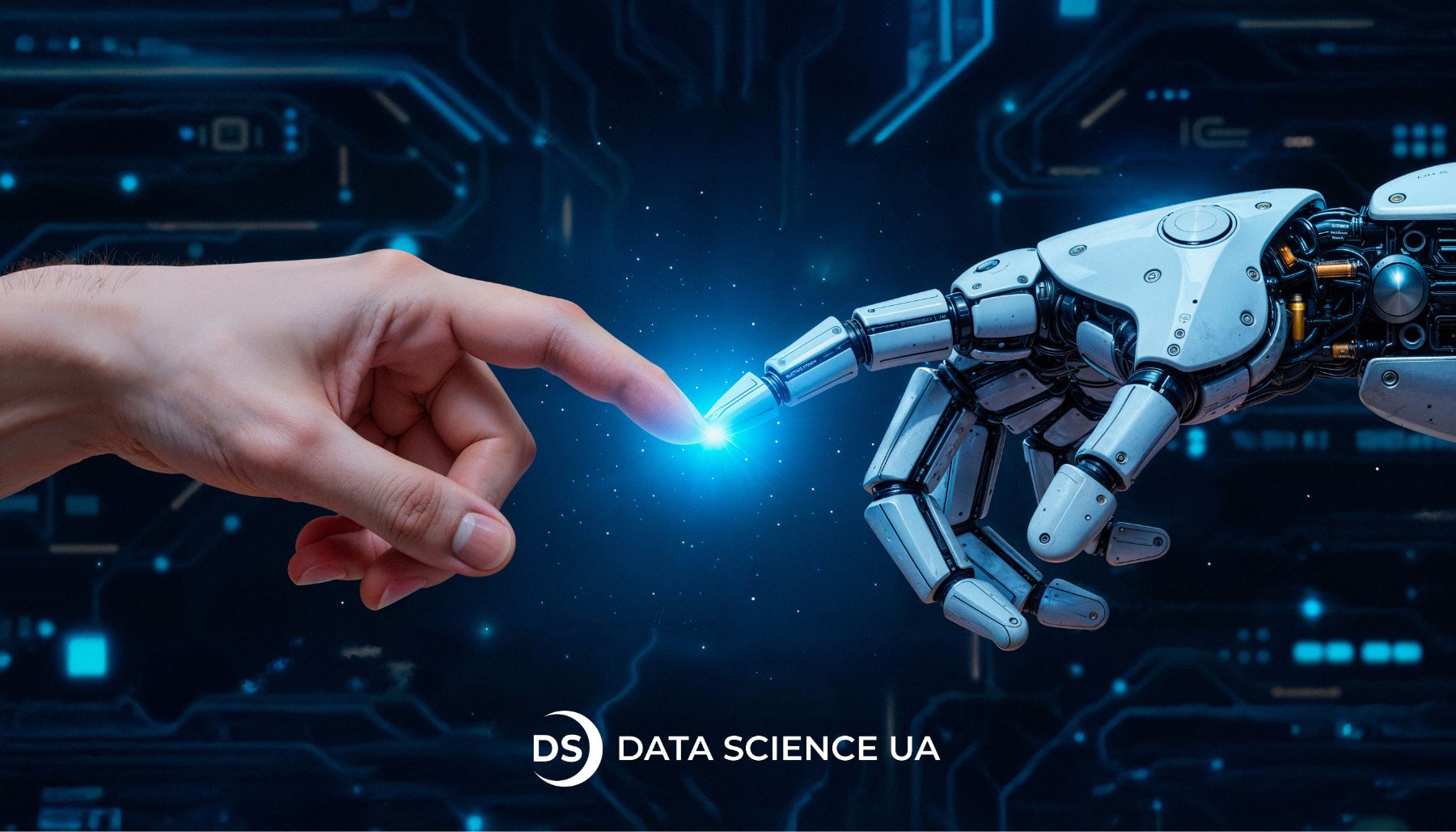What is data annotation?
Data annotation serves as a critical component in the field of artificial intelligence (AI) by providing labeled data that enables AI models to learn and improve their performance. Let’s explore why data annotation services are important in AI and how they contributes to the development and effectiveness of AI models.
To develop AI or ML-based models, a vast amount of customized data sets is required to meet the specific training requirements of the model. Data annotation plays a crucial role in this process by helping machines make sense of the information contained within the data. By annotating the data, AI models can understand the characteristics, relationships, and context embedded in the data, enabling them to perform tasks accurately and efficiently.
Data annotation in AI encompasses various techniques and types, focusing on different data formats and specific requirements of projects. For natural language processing solutions in AI, text annotation is crucial. It involves labeling text data to aid machines in understanding human communication processes, speech recognition, and developing virtual assistants and AI chatbots. Metadata is added to the annotated text to make keywords recognizable to computers, enhancing decision-making processes.
Video annotation, another key aspect of AI data annotation, is essential for visual training and perception models. It aims to make moving objects recognizable to machines with the help of computer vision development company. Frame-by-frame objects are precisely annotated, primarily for visual perception in self-driving cars and autonomous vehicles.
Image annotation holds significant importance as it plays a foundational role in creating AI models. The main objective of image annotation is to make objects recognizable to visual perception-based AI and ML models. High-quality training data sets are crucial for image annotation, where professionals annotate and tag objects using specialized techniques. Different methods, such as bounding box, semantic segmentation services, and landmark annotation, are employed based on the specific needs of AI projects.
NLP annotation in AI focuses on language and speech recognition, similar to text annotation. It involves labeling sentences with metadata and annotated keywords, improving natural language processing and facilitating sentiment analysis. Accurate NLP annotation enhances communication between machines and humans, leading to more efficient voice or text-based interaction.
Medical image annotation is another crucial aspect of AI data annotation. It involves annotating radiology images, such as X-rays, CT scans, MRIs, and ultrasounds. Expert radiologists manually annotate medical images to train models in diagnosing diseases with a high level of accuracy. This annotation process enables AI machines to detect similar indications in real-life scenarios, contributing to improved healthcare diagnostics.
Data annotation is vital for AI and ML projects as it provides the necessary fuel to train algorithms and create autonomous models. AI and ML models heavily rely on annotated data in the form of texts, images, or videos for their development and effectiveness. Without sufficient training data sets, the potential of AI and machine learning solutions development cannot be fully realized.
Data annotation techniques encompass various types, each requiring specialists to complete specific tasks effectively. Human-powered annotated data sets hold particular importance as they contribute to accurate machine learning. Companies like Anolytics offer image processing services for computer vision training, along with text and medical image annotation, using appropriate tools and techniques to make objects recognizable to AI models.
The Foundation of AI: The Importance of Data Annotation
AI development heavily relies on massive amounts of data, but not just any data – labeled and annotated data sets are the lifeblood of AI models. Data annotation provides the necessary fuel to train algorithms that form the core of AI models. Without sufficient annotated training data, AI models would lack the comprehension and accuracy required to perform complex tasks and deliver valuable insights.
Data annotation is instrumental in enhancing the accuracy and overall performance of AI models. By providing annotations, AI models can learn from past experiences and make accurate predictions on new, unseen data. This process enables AI models to excel in various domains, including natural language processing, sentiment analysis, image recognition software development services, and more. High-quality annotations obtained through data annotation processes result in more accurate and precise AI models.
Data annotation plays a pivotal role in addressing bias and variability in AI training. Through standardized annotation guidelines, human annotators ensure consistent and unbiased labeling of the data. This process helps mitigate any potential bias, providing AI models with a fair representation of the real-world scenarios they are expected to handle. The careful curation of labeled data minimizes variability and ensures that AI models can handle diverse inputs and deliver reliable results.
Data annotation allows for the customization of AI models to specific use cases or domains. Well-defined annotation guidelines enable human annotators to capture domain-specific knowledge and context, facilitating the AI model’s understanding of the intricacies of the problem at hand. This customization improves the AI model’s ability to make accurate predictions and provide valuable insights tailored to the specific requirements of businesses and applications.
Enhancing AI Training with Data Annotation
In the realm of artificial intelligence (AI), data annotation plays a vital role in enhancing the training process of AI models. By providing labeled data, data annotation empowers AI models to learn and improve their performance. Here’s why data annotation is crucial for enhancing AI training:
Supervised learning is a fundamental approach used in training AI models. Data annotation facilitates this process by assigning labels or annotations to the training data. These annotations serve as the ground truth that helps AI models understand patterns, relationships, and correlations within the data. By providing labeled examples, data annotation enables AI models to learn from past experiences and make accurate predictions on new, unseen data.
Enhancing Accuracy and Performance
The accuracy and overall performance of AI models depend on the quality of the training data. Data annotation ensures that the data used for training is accurately labeled and tagged, allowing AI models to learn directly from reliable sources. High-quality annotations obtained through data annotation processes result in more accurate and precise AI models. Such models can excel in various domains, including natural language processing, image classification, and sentiment analysis, to name a few.
Overcoming Data Bias and Variability
Data annotation helps address data bias and variability in AI training. By applying standardized annotation guidelines, human annotators can ensure consistent and unbiased labeling of the data. This process helps mitigate any potential bias, providing AI models with a fair representation of the real-world scenarios they are expected to handle. The careful curation of labeled data minimizes variability and ensures that AI models can handle diverse inputs and deliver reliable results.
Customization for Specific Use Cases
Data annotation allows for the customization of AI models to specific use cases or domains. Through well-defined annotation guidelines, human annotators can capture domain-specific knowledge and context, helping the AI model understand the intricacies of the problem at hand. This customization improves the AI model’s ability to make accurate predictions and provide valuable insights that are tailored to the specific requirements of the business or application.
Ensuring Accuracy and Quality through Data Annotation
Artificial intelligence annotation offers significant potential to enhance the accuracy and quality of AI models. Here are some ways data annotation helps ensure AI models deliver accurate and reliable results:
Dealing with the Variety of Data Types
The world of artificial intelligence deals with a wide variety of data types, ranging from images to text to audio. Data annotation helps ensure that AI models can handle diverse inputs and deliver accurate predictions. With the help of data annotation, we can assign relevant labels or annotations to data, so AI models can learn to differentiate between different data types, leading to more precise predictions and better performance. Learn more in ocr scanning services.
Handling Complex Situations
Artificial intelligence models are expected to handle complex situations, from detecting fake news to identifying objects in busy images. Data annotation plays a crucial role in preparing AI models for such scenarios. Through data annotation, we can train AI models to identify important features, handle edge cases, and understand the complexity of the problem at hand. This helps ensure that AI models can handle complex situations with ease and deliver accurate results.
Continuous Improvement
AI models can always improve and learn better from new data. Data annotation plays a crucial role in facilitating ongoing learning for AI models. By providing annotated data regularly, AI models can fine-tune their predictions and improve their performance continually.
In conclusion, AI annotations is crucial for ensuring the accuracy and quality of AI models. By handling different data types, handling complex situations, improving user experience, and continuous improvement, data annotation plays a pivotal role in delivering reliable and precise AI models that add value to businesses and applications.
Enabling Supervised Learning with Annotated Data
An essential application of data annotation in AI is enabling supervised learning. Supervised learning is a foundational approach where AI models learn from labeled examples to make predictions or classifications. Data annotation provides the labeled examples necessary for the model to understand the relationships between input data and desired outputs.
In the context of AI annotation, the annotated data acts as a teacher that imparts knowledge to the algorithm. Each labeled instance contributes to the model’s ability to generalize and make accurate predictions on unseen data. Through repetitive exposure to well-annotated data, the AI system becomes proficient at recognizing patterns and making informed decisions.
The significance of ai data annotation becomes evident when considering complex tasks like natural language processing, image recognition, and medical diagnosis. The accurate labeling of text sentiment, object boundaries, and disease indicators empowers AI models to provide insights and support decision-making with a high degree of precision.
AI annotation plays a pivotal role in shaping the capabilities of AI and machine learning systems. From ensuring data accuracy to enabling supervised learning, the process of data annotation lays the foundation for the development of intelligent technologies that impact various aspects of our lives.
Benefits of Using Data Annotation for AI and ML Models
By providing labeled context to raw data, data annotation enriches the training process and offers several key benefits:
-
Improved Model Accuracy:
Annotated data equips AI models with clear and accurate information, enabling them to recognize patterns, features, and relationships within the data. This precision enhances the accuracy of predictions and classifications.
-
Effective Supervised Learning:
Annotated data is essential for supervised learning, a common ML approach where models learn from labeled examples. This process allows models to generalize from labeled data, making accurate predictions on new, unseen data.
-
Enhanced Generalization:
Data annotation ai of helps in generalizing their understanding from labeled instances to new, similar data. This ability to generalize leads to better performance on real-world tasks.
-
Reduced Data Bias:
Proper data annotation ensures diverse and representative labeling, mitigating biases that may arise from inadequate or skewed training data.
Empowering AI Models with Annotated Data
Data annotation empowers AI models by providing them with the labeled data they need to learn, generalize, and make informed decisions:
-
Leveraging Human Expertise:
Annotation AI involves human experts who understand the nuances and context of the data. This human touch is essential for accurate labeling, especially in tasks that require subjective interpretation, such as sentiment analysis or medical diagnosis.
-
Enabling Complex Tasks:
AI models excel in tasks such as image recognition, language processing, and autonomous driving when trained on annotated data. These annotations serve as the bridge between raw data and AI’s ability to understand and respond effectively.
-
Supporting Real-World Applications:
Annotated data ensures AI models can provide practical solutions in various industries. From healthcare to finance, accurate labeling allows AI systems to assist professionals by providing reliable insights.
-
Future-Proofing AI:
As AI development services advance, the importance of high-quality, annotated data remains constant. Well-annotated data not only improves current AI capabilities but also contributes to the training of more sophisticated models in the future.
Data Annotation’s Impact on AI Fairness and Bias
Data annotation in AI holds a pivotal role in addressing fairness and bias concerns. Here’s how:
Mitigating Bias: Annotating diverse and representative data ensures AI models learn from a balanced dataset, reducing biases that could lead to discriminatory decisions. This approach promotes fairness in AI applications.
Enhancing Transparency: By annotating data to include attributes like gender, ethnicity, and age, AI developers can monitor and explain the model’s decision-making process, allowing for greater transparency and accountability.
Identifying Biased Patterns: Data annotation facilitates the identification of biased patterns within training data. Annotate AI helps developers recognize and rectify any biased outcomes, creating AI systems that provide equitable results.
Guiding Ethical Decisions: Annotated data allows AI models to make ethical decisions by understanding societal norms and values, contributing to responsible and empathetic AI.
In conclusion, data annotation’s impact on AI extends beyond performance; it aids in creating unbiased, transparent, and ethically sound AI systems.
FAQ
How much annotated data is required for training AI models?
The amount of annotated data needed varies depending on the complexity of the AI model and the desired level of accuracy. Generally, a larger annotated dataset leads to more robust and accurate AI models. However, there is no specific threshold, and it often depends on the specific project requirements and the AI algorithm being used.
Who performs data annotation for AI projects?
Data annotation is typically performed by human annotators who have expertise in the specific domain and understand the annotation guidelines. These annotators have a deep understanding of the data labeling tasks and follow predefined rules to ensure consistency and quality.
Is data annotation only relevant for AI development?
No, data annotation is not limited to AI development. While it plays a crucial role in training AI models, data annotation is also relevant for various other applications such as improving search engine algorithms, enhancing data quality for analytics, and creating labeled datasets for machine learning tasks beyond AI.
Is data annotation a one-time process?
In most cases, data annotation is an iterative and ongoing process. As AI models evolve and new data becomes available, re-annotation or adding new annotations may be required to maintain model accuracy or accommodate changes in the domain. Data annotation is a continuous effort that adapts to the evolving needs of AI projects.





